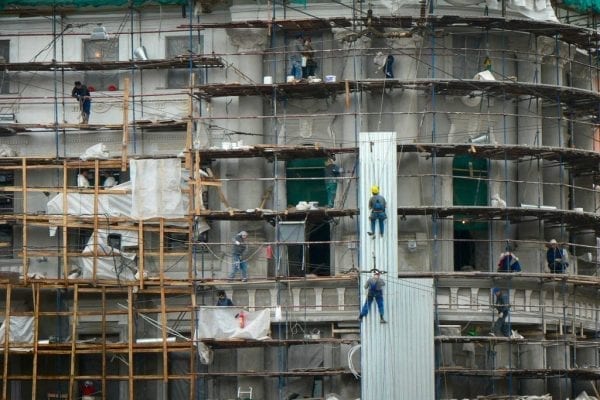We don’t have to tell you that construction lending is high risk and that the more complex the project, the more risks there are. As part of construction lending due diligence, most institutions require a Plan and Cost Review (PCR).
What many lenders don’t know, however, is that not every PCR provider has the expertise to recognize the most common construction drawing mistakes. Here are four that will come back to haunt you.
One: The Plans Are Incomplete
Complete construction plans consist of multiple sheets including architectural, mechanical engineering, electrical engineering, civil engineering, structural engineering, and possibly other disciplines. The more complex the project, the more sheets of drawings there will be. When the plans are not complete, it increases risk for the lender.
This problem is especially common when a complex project like an apartment building has been drafted by a home builder or an architect who does not have extensive experience in larger projects. If the incomplete drawings are allowed to go to construction, they will lead to change orders when the contractor gets on site and starts pointing out the missing pieces to the owner, your borrower.
Two: The Plans Are Not Coordinated
In my construction plan reviews, it is not unusual for me to uncover instances where the architectural drawings don’t coordinate with the mechanical drawings, or mechanical drawings don’t coordinate with electrical drawings, resulting in impossibilities like ducts or electrical conduit running straight through steel beams.
Like mistake #1, lack of coordination leads to change orders as the general contractor and their subs scramble to figure out how to fix the problem after the project is underway. Finding the mistake during the PCR means it can be fixed before it leads to unnecessary additional costs.
Three: The Plans Lack Detail
To save time and money, some architects and engineers will skip some of the details in the drawings. For instance, instead of drawing the details of a roof edge condition or a window detail, they’ll add vague notes about what that portion of the construction will contain.
Once the contractor is on site, and they have to attempt to interpret the vague notes into actual construction, they will naturally have questions about exactly how that is to be done. The answers to those questions will often lead to change orders. Alternately, they or a sub may install the detail based on their interpretation, only to find out that it doesn’t fit the expectations of the building owner. Subsequent changes again likely will lead to change orders.
Four: Your PCR Provider Reviews The Wrong Set
Believe it or not, this is the most common mistake I see, which reduces the accuracy and reliability of our PCR. The architectural process naturally produces multiple progress sets of drawings, from the original conceptual design drawings to progress sets of construction drawings (30% drawings to 60% drawings to 90% drawings) to, finally, the “for construction” set that the contractor will use to build the building.
Very often, we’ll receive the progress drawings for review. If that is the set that is reviewed, it constitutes a potential risk for the lender. Between, say the 90% set and the “for construction” set, there could be sets of revisions, resulting from building department reviews and/or owner dictated changes. As a result of these revisions, changes can be made that significantly impact the cost of the job and/or introduce errors that will lead to change orders.
As an example, I may review a set of 90% drawings that shows a certain size pipe coming out of a retention pond. Between that drawing set and the “for construction” drawing set, the builder may be told that they need a larger pond, that requires larger stormwater pipe. If I’ve reviewed the 90% drawings only, I won’t have an opportunity to review and comment on those costs as part of the PCR.
Recognizing that time constraints may limit the availability of the “for construction” drawings at the time the PCR is executed, to prevent situations like the one mentioned above, as much as possible, the PCR provider should be completing their review from the final permitted set of construction drawings.
By taking measures to prevent common mistakes, I save our clients millions of dollars in change orders. When hiring your PCR provider, make sure they have the same kind of experience and background to recognize when one of these common mistakes occurs, so they can help you protect your investments. Or, give our experts a call today to get on our client list for your next PCR.






